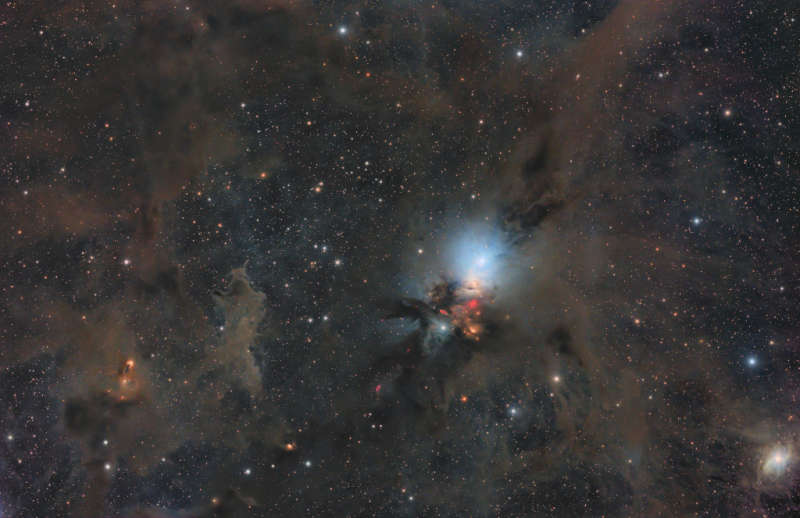Credit & Copyright: Jeff Schilling
Explanation:
Clouds of stardust drift through
this deep skyscape,
across the
Perseus
molecular cloud
some 850 light-years away.
Dusty nebulae reflecting light from embedded young stars
stand out in the nearly 4 degree
wide field of view.
With a characteristic bluish color
reflection nebula NGC 1333 is
prominent near center.
Hints of contrasting red emission from Herbig-Haro objects,
the jets and shocked glowing gas emanating from recently formed stars,
are scattered across
the
dusty expanse.
While many
stars are forming
in the molecular cloud, most
are obscured at visible wavelengths by the pervasive dust.
The chaotic environment surrounding
NGC 1333
may be similar to one in which our own Sun
formed over 4.5 billion years ago.
At the estimated distance of the Perseus molecular cloud,
this cosmic scene would span about 80 light-years.
Growing Gallery:
Comet
ATLAS (G3)
1999 2000 2001 2002 2003 2004 2005 2006 2007 2008 2009 2010 2011 2012 2013 2014 2015 2016 2017 2018 2019 2020 2021 2022 2023 2024 2025 |
Yanvar' Fevral' Mart Aprel' Mai Iyun' Iyul' Avgust Sentyabr' Oktyabr' Noyabr' Dekabr' |
NASA Web Site Statements, Warnings, and Disclaimers
NASA Official: Jay Norris. Specific rights apply.
A service of: LHEA at NASA / GSFC
& Michigan Tech. U.
|
Publikacii s klyuchevymi slovami:
Perseus - molecular cloud - Molekulyarnye oblaka - Persei
Publikacii so slovami: Perseus - molecular cloud - Molekulyarnye oblaka - Persei | |
Sm. takzhe:
Vse publikacii na tu zhe temu >> | |
